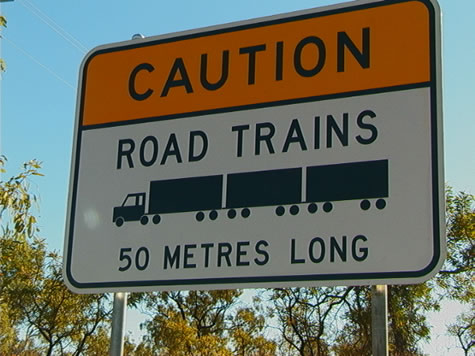August 8, 2001
Today’s ride was our first long section of bitumen (pavement) and we saw and noticed a very big difference in what was going on around us. We found that a seemingly dead and solid piece of ground alters the surroundings very much!

During the Wet season here in northern Queensland, massive amounts of water are poured down onto the ground. When rain hits the road, it flows off, whereas when rain hits the ground it seeps in. Along the roadside, standing water will remain for longer periods of time than out in the bush. Also, potholes and low spots in the bitumen act as rain catches as well. This allows new growth of tender vegetation that attracts native species that will learn to depend on the availability of green. These animals in turn become victims of more frequent encounters with vehicles (crashes). Kangaroos, wallabies, small rodents and other herbivores are these victims. Scavengers, such as crows and ravens, wild dogs, foxes and others feed on the carcasses. They too become victims and become part of the ongoing cycle of man’s interaction with his/her surrounding environment.
Suggested learning activities: can you find any areas around your hometown where human interaction with the environment has affected your local flora and fauna? Examples: Birds nesting under bridges, dams on lakes and rivers affecting fish migration, rodents becoming dependent on humans’ litter…Can you think of any?
By, April and Crister